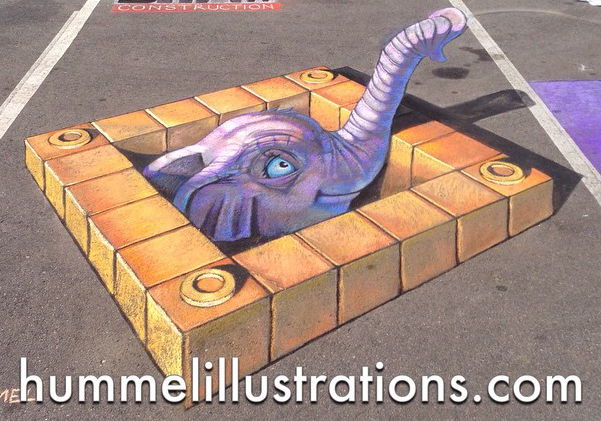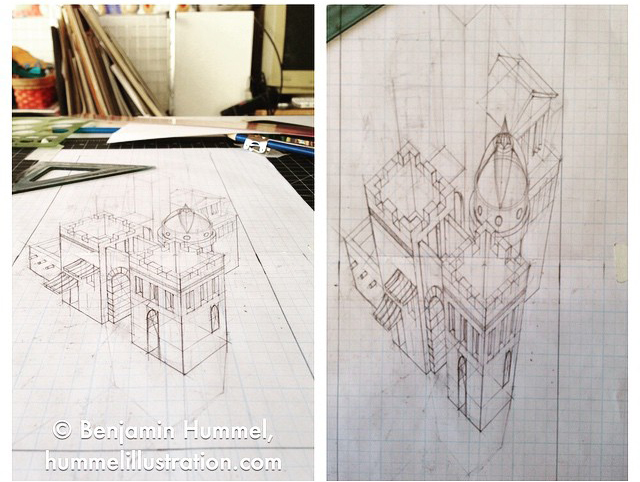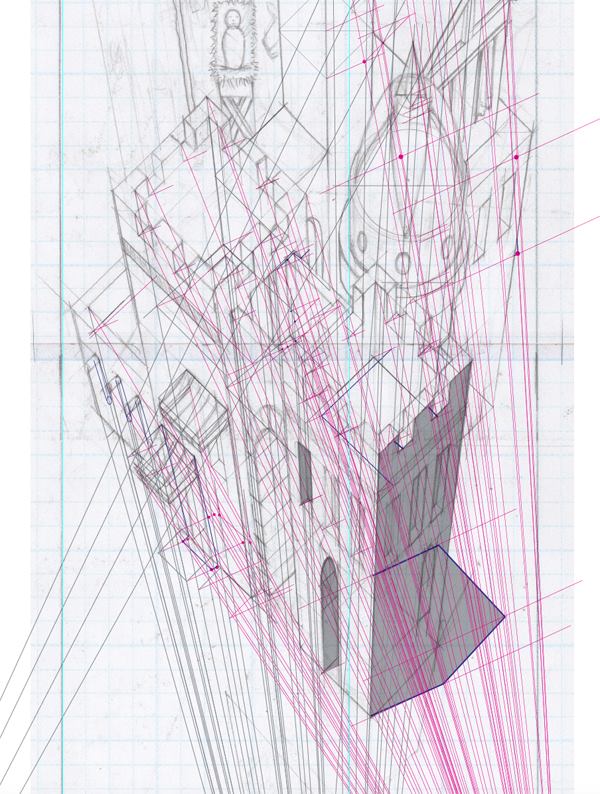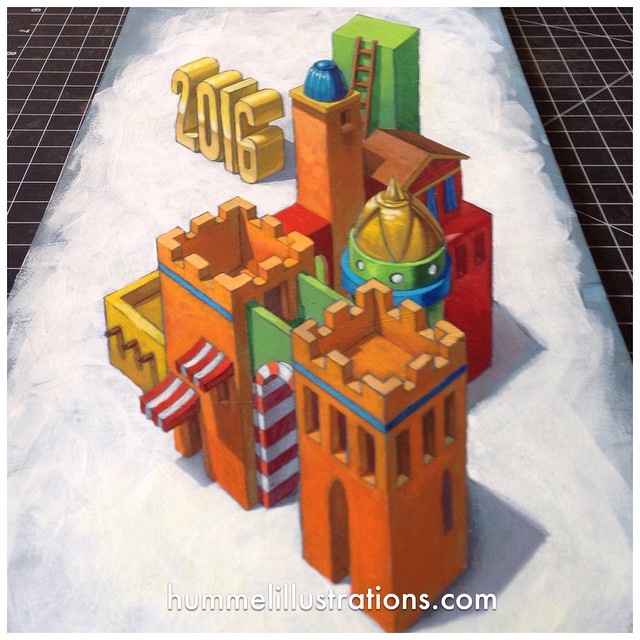In addition to my traditional, printed page, illustration work, I also am an illusionary 3D chalk artist. Yes, I’m one of those crazy guys who sits underneath blistering sun and driving rain as I try and bring my street art illustration, created in nothing more than chalk, into something that appears 3D in the camera. If you haven’t checked us out, I invite you to go to PeopleOfTheChalk.com. And while you are at it, if you know of or are in charge of an upcoming festival or event and you would like me and my team (aka, my talented artist wife) to come down and perform a custom (as in, you help choose the design) 3D chalk art piece, be sure to drop me a line and we can set that up. (*AHEM, AHEM*)
Thus, when it came time to come up with a design for my holiday card, I thought to myself, what if I could create a similar illusion, but on a smaller scale. What if those receiving the cards could take those cards, lay them flat, and then with their camera phones get a sense of that illusionary depth.
That is what I endeavored to do with this piece. Nothing is new in regards to how to set up the reverse perspective, except that instead of working in feet, I’m working in inches. I plotted out my reverse vanishing point and drew everything up on graph paper. The image below shows first how it is supposed to look when the illusion comes together, and then what it actually looks like when looking straight down on it. It’s pretty fascinating how, if you have the vanishing point in the right position, based upon the precise viewing area of the camera, the converging lines appear to look parallel.
Next, I had to plot out the shadows. The illusions work best if you have a strong shadow pattern and it is accurate according to a given light source. Assuming that most people would be looking at these cards with a light source directly above them, I anticipated this to be the light source, moving it to the left a little to give it some visual interest. With this in mind, I plotted both a shadow vanishing point and a light source point, in reverse perspective. Then every single to corner that can cast a shadow somewhere needs to be plotted to BOTH of these points, plus additional lines drawn back to the reverse vanishing point. To see how complex that ended up being, see below.
I took this shadow information and retraced everything onto illustration board so I could paint it traditionally. I painted a version digitally as a color study and used that as a guide as I went into this final piece.
If all of this sounds complex, … guess what, it is. However, I understand that perspective is a type of math that can be very confusing to the lay person or the right brained artist. For that reason, I’m writing a book on perspective, designed to be very user friendly and easy to understand and use. It’s in it’s rough, rough draft stage right now, but as I continue to develop it, I’ll keep you posted.
That’s all for now. I made a limited number of these cards, but if you send me a query from my contact page and let me add you to my email list (which I email once every seven years, I’m kind of like a comet in that regard), I’ll be sure to mail you any of the extras I have, first come, first serve.





